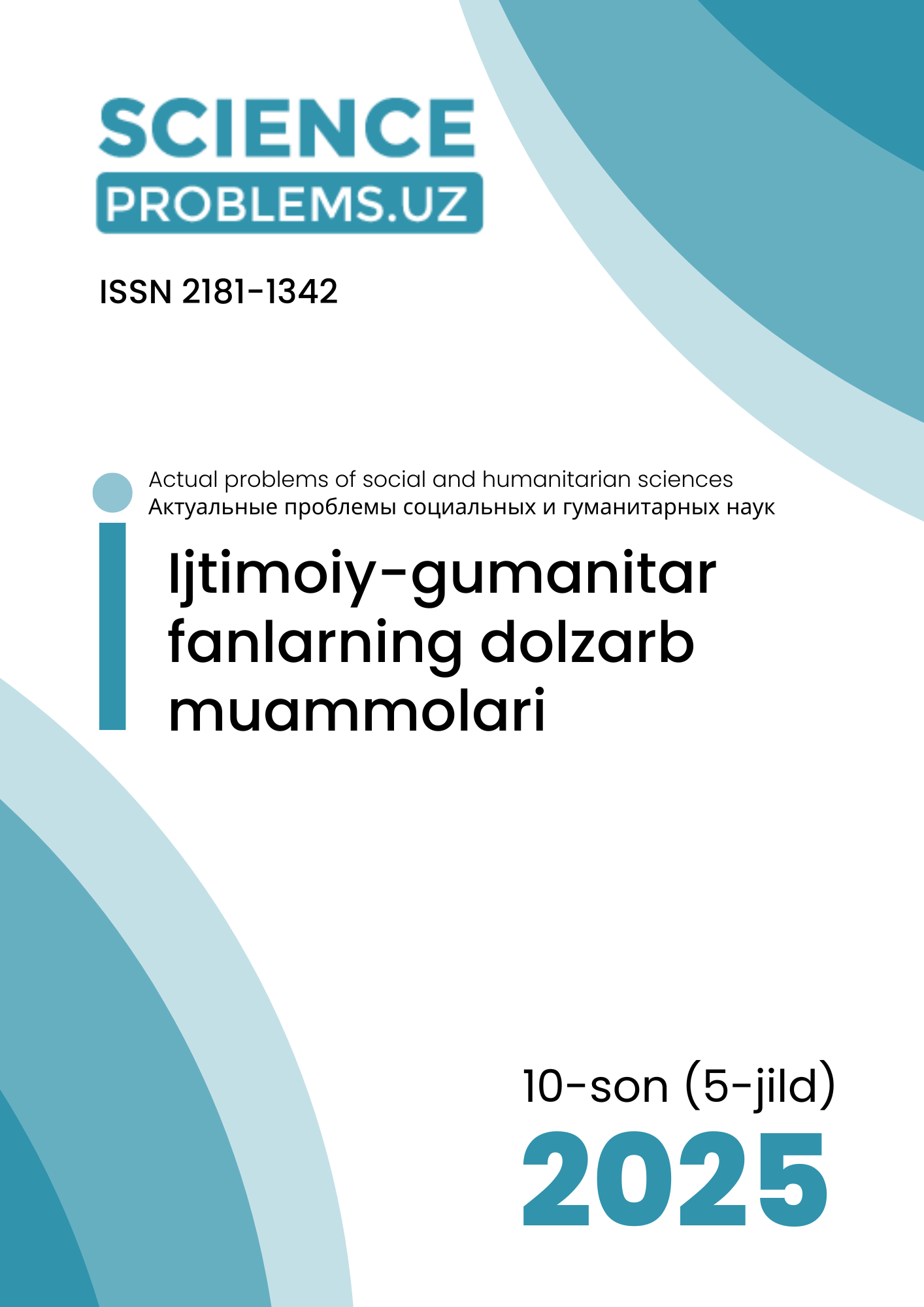EKOLOGIK TAFAKKUR VA YASHIL IQTISODIYOT – UCHINCHI UCHINCHI RENESSANSNING YANGI FALSAFIY PARADIGMASI SIFATIDA
Kalit so'zlar
https://doi.org/10.47390/SPR1342V5I10Y2025N42Kalit so'zlar
Uchinchi Renessans davri, ekologik tafakkur, yashil iqtisodiyot, ijtimoiy-falsafiy asoslar, barqaror rivojlanish, ekologik ong, maʼnaviy uygʻonish, ekologik masʼuliyat.Annotasiya
Ushbu maqolada Uchinchi Renessans davrining falsafiy mazmuni va uning ekologik tafakkur shakllanishidagi oʼrni tahlil qilinadi. Tadqiqotda inson va tabiat oʻrtasidagi uygʻunlikni tiklash, ekologik masʼuliyatni oshirish hamda yashil iqtisodiyot konsepsiyasini ijtimoiy-falsafiy nuqtai nazardan asoslash masalalari yoritilgan. Yashil iqtisodiyot modeli Uchinchi Renessans davrining asosiy tamoyillaridan biri sifatida, barqaror rivojlanish, maʼnaviy uygʻonish va ekologik tafakkur uygʻunligini ifodalaydi. Maqola falsafiy, ekologik va ijtimoiy fanlar tutashgan nuqtada insoniyat tafakkurining yangi paradigmasi ekologik ongning shakllanishini tahlil qiladi.
Manbalar
1. Шмелев, С. Green Economy Reader: Lectures in Ecological Economics and Sustainability. – Springer, 2017. – 563 p.
2. Якобсен, О. Transformative Ecological Economics: Process Philosophy, Ideology and Utopia. – London: Routledge, 2019. – 248 p.
3. Дэйл, Г., Матай, М. В., де Оливейра, Ж. А. П. Green Growth: Ideology, Political Economy and the Alternatives. – London: Bloomsbury Academic, 2016. – 368 p.
4. Jo‘rayev, A., Xo‘jayev, B. Barqaror rivojlanish va ekologik xavfsizlik. – Toshkent: Fan, 2018. – 220 b.
5. Tursunov, M., To‘laganova, G. Ekologik tafakkur va yashil iqtisodiyot asoslari. – Toshkent: Iqtisod-Moliya, 2022. – 198 b.








